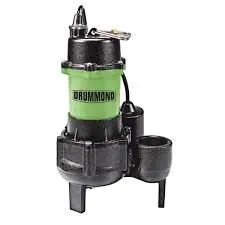Latin
- Afrikaans
- Albanian
- Amharic
- Arabic
- Armenian
- Azerbaijani
- Basque
- Belarusian
- Bengali
- Bosnian
- Bulgarian
- Catalan
- Cebuano
- Corsican
- Croatian
- Czech
- Danish
- Dutch
- English
- Esperanto
- Estonian
- Finnish
- French
- Frisian
- Galician
- Georgian
- German
- Greek
- Gujarati
- Haitian Creole
- hausa
- hawaiian
- Hebrew
- Hindi
- Miao
- Hungarian
- Icelandic
- igbo
- Indonesian
- irish
- Italian
- Japanese
- Javanese
- Kannada
- kazakh
- Khmer
- Rwandese
- Korean
- Kurdish
- Kyrgyz
- Lao
- Latin
- Latvian
- Lithuanian
- Luxembourgish
- Macedonian
- Malgashi
- Malay
- Malayalam
- Maltese
- Maori
- Marathi
- Mongolian
- Myanmar
- Nepali
- Norwegian
- Norwegian
- Occitan
- Pashto
- Persian
- Polish
- Portuguese
- Punjabi
- Romanian
- Russian
- Samoan
- Scottish Gaelic
- Serbian
- Sesotho
- Shona
- Sindhi
- Sinhala
- Slovak
- Slovenian
- Somali
- Spanish
- Sundanese
- Swahili
- Swedish
- Tagalog
- Tajik
- Tamil
- Tatar
- Telugu
- Thai
- Turkish
- Turkmen
- Ukrainian
- Urdu
- Uighur
- Uzbek
- Vietnamese
- Welsh
- Bantu
- Yiddish
- Yoruba
- Zulu
Telephone: +86 13120555503
Email: frank@cypump.com
Dec . 18, 2024 20:15 Back to list
Efficient Submersible Sludge Pump for Heavy-Duty Wastewater Management Solutions
Submersible Sludge Pumps An Essential Tool for Waste Management
Submersible sludge pumps are specialized devices designed for effectively pumping viscous fluids containing solid particles, primarily in wastewater treatment facilities, industrial applications, and construction sites. The increasing need for efficient waste management and environmental protection has led to a growing reliance on these machines. This article explores the functionality, types, applications, benefits, and maintenance of submersible sludge pumps.
Functionality
A submersible sludge pump operates by being submerged in the fluid it is meant to pump. The pump's motor is sealed within a watertight casing, allowing it to operate underwater without any risk of electrical failure. Utilizing an impeller, the pump creates a pressure difference that moves the sludge through the discharge pipe. The design of submersible sludge pumps enables them to handle not only water but also thick sludge, slurry, and sediments with various solid content sizes.
Types of Submersible Sludge Pumps
Submersible sludge pumps come in various types, designed to cater to different operational needs. Some common types include
1. Centrifugal Pumps These pumps use a rotating impeller to generate centrifugal force, which moves the fluid. Centrifugal pumps are well-suited for applications involving large volumes of liquid with low viscosity.
2. Positive Displacement Pumps These pumps work by trapping a fixed amount of fluid and forcing it into the discharge pipe. Positive displacement pumps are ideal for applications involving high-viscosity fluids.
3. Vortex Pumps These pumps are designed to handle solids with minimal risk of clogging. The vortex impeller generates a flow pattern that keeps solids suspended, making them suitable for sludge containing larger particulates.
4. Submersible Grinder Pumps These pumps incorporate a grinding mechanism, allowing them to handle tough, fibrous materials effectively. This capability is particularly useful in municipal waste applications.
Applications
Submersible sludge pumps are widely utilized across various industries. Some common applications include
- Wastewater Treatment In municipal and industrial wastewater treatment plants, these pumps are used to transfer sludge from settling tanks to digesters and dewatering processes.
submersible sludge pump

- Construction During excavation and construction projects, submersible pumps are deployed to remove water that accumulates in trenches, basements, and pits, ensuring a dry working environment.
- Mining and Quarrying In mining operations, submersible sludge pumps are employed to manage water and sediment in pits, allowing for continuous operation
.- Agriculture These pumps are sometimes used in the agricultural sector for managing slurry in animal farms and transferring sludge for biogas production.
Benefits
The benefits of submersible sludge pumps are numerous
- Efficiency They can operate continuously without the need for priming, making them highly efficient for moving large volumes of sludge.
- Versatility Submersible pumps can handle a variety of fluids, including those with high solid content, making them adaptable to different applications.
- Space-Saving Design Being submerged eliminates the need for bulky above-ground equipment, which can be advantageous in space-constrained environments.
- Reduced Noise Levels Because these pumps operate underwater, they generate less noise compared to surface pumps, making them suitable for urban areas.
Maintenance
To ensure optimal performance and longevity of submersible sludge pumps, regular maintenance is essential. Owners should conduct routine inspections to check for wear and tear, particularly on the impeller and seals. Cleaning the pump and removing any buildup of sludge or debris can significantly enhance functionality. Additionally, it is vital to monitor the electrical components, ensuring that all connections are secure and in good condition.
Conclusion
In conclusion, submersible sludge pumps play a critical role in various industries by facilitating efficient waste management and fluid transfer. With their unique design and operational capabilities, they provide a reliable solution for handling challenging sludge and wastewater scenarios. Understanding their functionalities, types, applications, benefits, and maintenance will help users make informed decisions, optimizing their use in diverse applications. As the demand for effective waste management continues to grow, submersible sludge pumps will undoubtedly remain an indispensable tool in various sectors.
-
ISG Series Pipeline Pump - Chi Yuan Pumps | Energy Efficiency&Compact Design
NewsAug.03,2025
-
ISG Series Vertical Pipeline Pump - Chi Yuan Pumps Co., LTD.|High Efficiency, Low Noise, Durable
NewsAug.02,2025
-
ISG Series Vertical Pipeline Pump - Chi Yuan Pumps | High Efficiency, Low Noise
NewsAug.02,2025
-
ISG Series Vertical Pipeline Pump- Chi Yuan Pumps Co., LTD.|High Efficiency&Compact Design
NewsAug.02,2025
-
Heavy-Duty Mining Sludge Pumps - Wear-Resistant Slurry Handling
NewsAug.02,2025
-
Horizontal Split Case Pump with GPT-4 Turbo | High Efficiency
NewsAug.01,2025










